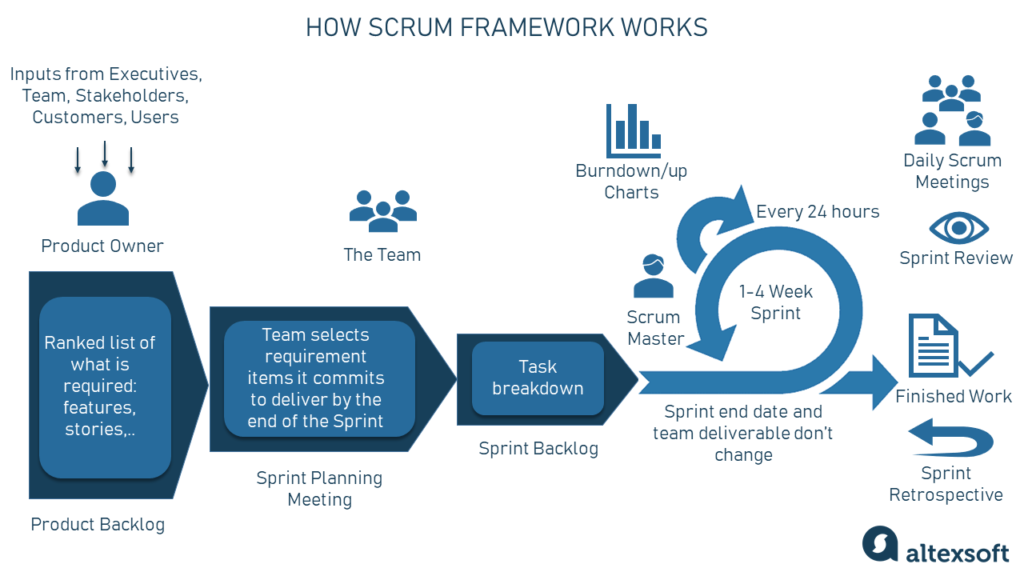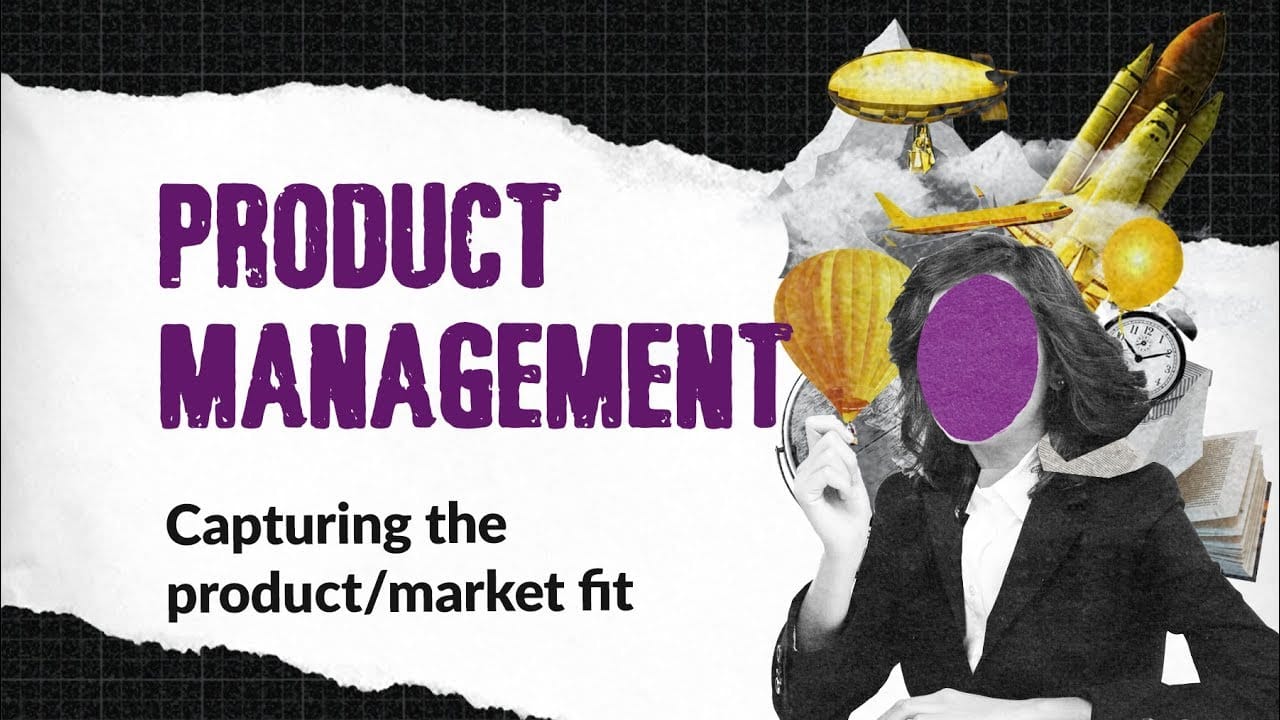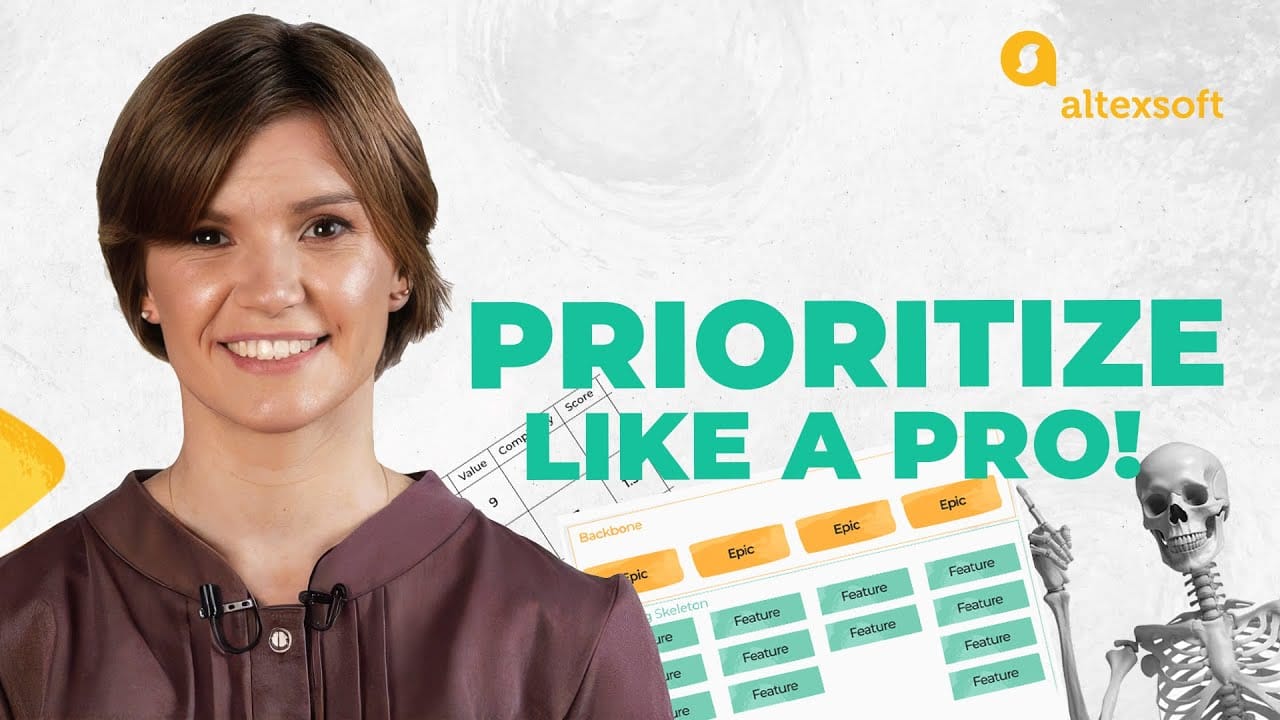Today, Agile methodologies have become widely adopted, with Scrum being one of the most well-known. But while Scrum provides a well-defined structure, the roles and processes often become blurred in practice.
The role of the Product Owner is one of the most critical in Scrum. However, the role's supposed nature and how it plays out in real-world settings can differ significantly. In this guide, we examine the theoretical foundations of the PO role – and how it is typically implemented in practical, everyday scenarios.
What is a Product Owner (PO)?
The Product Owner is accountable for maximizing the value of the product resulting from the work of the Scrum Team.
In Scrum, the Product Owner (PO) is responsible for managing the product Backlog and ensuring the product delivers value to business stakeholders and end customers. The PO does this by choosing the tasks to work on in the next Sprint and ensuring they align with the customer’s needs and business objectives.
The Product Owner role was part of the Scrum framework's initial development in the 1990s, but it gained wider recognition following the 2001 Agile Manifesto and was formally documented in the first official Scrum Guide in 2010.
To better understand the PO role, it's important to grasp the basics of Scrum first and then how it fits in Agile.
The role of a Product Owner in Scrum
In a nutshell, Scrum is an Agile framework that organizes work into Sprints, or iterations of usually two to four weeks. The goal of each Sprint is to create a potentially shippable product increment, meaning a working version of the product that can be tested or released.

Scrum framework
In Scrum Teams, there are three well-defined key roles or, as they’re now called, accountabilities.
A Scrum Master focuses on facilitating the Scrum process, helping the team remove obstacles, and ensuring they follow Scrum practices.
The Developers are the people on the Scrum Team who actually build the product. Scrum typically implies small (up to 10 people), cross-functional, self-managing teams.
A Product Owner is responsible for defining the work that needs to be done. In his book Scrum: The Art of Doing Twice the Work in Half the Time, Jeff Sutherland emphasizes that the Product Owner's primary job is translating the team's effort into value for the customer.
The PO must know the market and collaborate closely with the customer. This allows them to deeply understand the business case, user needs, and the essence of the product itself. That, in turn, helps the PO to develop the long-term vision of the product – and make day-to-day decisions on priorities, i.e., what must be done first to align with that vision.
The role of a Product Owner in SAFe
Scaled Agile Framework (SAFe) is a methodology designed to help large organizations implement Agile practices on an enterprise level and coordinate multiple teams. It incorporates elements from Scrum, Kanban, and Lean, organizing teams into Agile Release Trains (ARTs) that work together on larger initiatives.
Since it scales Scrum from team to enterprise level, SAFe includes the essential roles – the Product Owner, Scrum Master, and Agile Team members – and introduces additional ones, such as Product Manager, System Architect, Release Train Engineer, etc.
The role of the Product Owner in SAFe is similar to that of Scrum, except that it’s more tactical. The PO still manages the Backlog and decides what the team will work on next, but it’s the Product Manager who handles strategic responsibilities like product vision, strategy, and roadmaps, focusing on market needs and external stakeholders.
The Product Owner and other roles in Agile
As we said, the PO role is absolutely mandatory in Scrum. However, many organizations practice a hybrid or modified version of the framework. So in reality, companies or teams that do not fully adhere to Scrum practices have the PO position, but their role is way more fluid. Besides, other characters are often introduced.
And that’s where things become really flexible. Here are a few scenarios common in Agile, Scrum-like settings.
Product Owner vs Project Manager
Though from absolutely different paradigms, the POs and PMs often coexist. While the PO is busy understanding customer needs and prioritizing the Backlog, the PM handles project execution.
PMs are responsible for meeting deadlines, managing resources, and ensuring the team delivers the product on time and within scope. Unlike the PO, the Project Manager doesn’t typically make product decisions but ensures the project runs smoothly.
Product Owner vs Product Manager
As described above, if there are both positions in the company, the PO handles the Backlog and works closely with the team, while the Product Manager focuses on the strategy and market fit.


Product Owner vs Business Analyst
The responsibilities of the PO and BA can overlap in terms of transforming stakeholders’ requirements into Backlog items. However, they remain distinct. The PO is the decision-maker on the product, driving the Backlog and the product’s direction. The BA, on the other hand, is more of an analyst and communicator, gathering, interpreting, and documenting requirements for the team to implement.
Product Owner as "mini-CEO"
In smaller companies, especially startups, the PO often has a much broader set of responsibilities. In these environments, the PO may act almost like a CEO, owning not just product direction but also marketing, sales, and even customer support.
This can lead to a more hands-on approach with team members and the product itself, which is far from the pure Scrum role but is often necessary in such environments.
Responsibilities of a Product Owner
As you can see, the Product Owner role, while clearly defined in Scrum, can take on different forms and responsibilities depending on the organization, industry, or specific project. In larger organizations, the PO's role may be more tactical or split with other positions like Product Manager or BA.
Since the PO's influence and responsibilities can vary significantly, it's important to consider the specific context in which they operate. However, we can generally define some of the typical PO responsibilities.
Developing Product Goal
In Scrum, the PO is responsible for defining the Product Goal. The Product Goal provides a clear, overarching objective for the product and guides the Scrum Team’s work. It ensures that all Backlog items are aligned with the product vision and business objectives.
Developing user stories and acceptance criteria
As previously mentioned, the PO works closely with business stakeholders and end users to gather and document requirements.
The PO’s job is to deeply understand both business and user needs, break down high-level requirements into manageable user stories, and develop the acceptance criteria that define success for each feature.
Creating and managing the Backlog
Once requirements are gathered and user stories are written, the PO creates the Product Backlog, aligning it with the overall Product Goal.
Then the PO regularly works with the team on Backlog refinement to review all the items, rank them, estimate effort, and clear all the related details. The goal is to prepare the items for future Sprints.
Since the Backlog is a living document that evolves as development progresses, the PO regularly updates it to reflect the changing requirements and new insights.
Prioritizing Backlog items
Though part of Backlog refinement, prioritization is worth a separate mention. It is often seen as the Product Owner’s primary responsibility – to choose the right features to work on, prioritizing tasks that deliver the most business value and meet customer needs.
This is often the most challenging aspect of the role, as it involves complex decisions. The PO must constantly evaluate the trade-offs between different features, balancing customer satisfaction, business objectives, and technical feasibility.


Sprint planning
Once the Backlog is prioritized, the PO suggests items for the upcoming Sprint, ensuring each iteration delivers maximum value.
At this stage, the PO should have those selected Backlog items well-defined and granular enough for the development team to work on effectively.
Reviewing and validating Sprint increments
The Product Owner is responsible for accepting or rejecting iteration increments. During the Sprint Review (or after each iteration), the Scrum Team and other stakeholders inspect the outcome of the Sprint to determine future Backlog adaptations.
Collaboration with stakeholders
The PO regularly engages with different stakeholder groups.
This includes presenting product increments to customers/sponsors/decision-makers to get feedback, clarify requirements, and align with the business objectives.
The PO might also conduct user research or work with the marketing team to understand market needs. After all, the PO is the “voice of the customer” that has to be conveyed to the developers.

Source: qwertyfire on Tenor
Working with the team
Internally, the PO works closely with a development team to make sure everyone understands the vision and priorities, guiding the team toward high-impact work. All Scrum guidelines emphasize that the PO must be available to the team to answer questions and explain what needs to be done and why.
Product Owner skills
The Product Owner's skillset combines a mix of technical, business, and people skills, all of which are crucial for successfully guiding the product development process.
Prioritization and decision-making. As we mentioned, the key skill is the ability to prioritize effectively, balancing customer needs, business value, and technical feasibility. The PO must be able to make tough decisions about what features to build next.
The PO’s role also involves leadership and the ability to foster a value-oriented environment, guiding the team toward shared goals.
Domain expertise. A strong understanding of the industry (market conditions, user needs, competitors, etc.) helps a PO realize the business values and make effective product-related decisions.
Communication and stakeholder management. The PO must be an excellent communicator, able to engage with internal and external stakeholders, including customers, business leaders, marketing teams, and developers.
The PO must be ready to manage the role's continuous duality, balancing customer requirements and the team’s capacity. On one hand, the PO must attend to the customer, manage their expectations, and represent their voice. On the other hand, it’s about supporting and guiding the team.
The Product Owner… needed to spend half their time talking to the people buying the product (getting their thoughts on the latest incremental release and how it delivered value) and half their time with the team creating the Backlog (showing them what the customers valued and what they didn’t).
Agile knowledge and Scrum expertise. As the Product Owner works within an Agile framework (typically Scrum), they must have a solid understanding of Agile principles and processes. This includes knowledge of Scrum events (like Sprint Planning, Sprint Reviews, and Retrospectives), as well as the ability to manage a Backlog and work in iterations.
Strategic thinking. The PO must be able to define the Product Goal and align it with business objectives. They must understand the market, customer needs, and the competitive landscape, translating these insights into a compelling product direction.
Analytical thinking. An effective PO needs analytical skills to assess complex product challenges, gather insights from data, and make informed decisions. They need to break down high-level business goals into actionable, manageable user stories and ensure that solutions are viable and valuable.
Technical understanding. While not necessarily an engineer, a PO should have a basic understanding of technical aspects to communicate effectively with the development team, evaluate feasibility, and make informed decisions. Understanding technical constraints and opportunities helps the PO set realistic goals and expectations.
Adaptability and resilience. A Product Owner must be able to adapt to changing circumstances and be resilient in the face of setbacks. Agile development is iterative, and priorities can shift, so the PO must be able to adjust the product direction or plans when needed and stay focused on the bigger picture.
Time management and multitasking. Managing multiple tasks, deadlines, and responsibilities simultaneously requires strong time management and organizational skills. The PO must effectively juggle stakeholder feedback, Backlog refinement, sprint planning, and daily team interactions without losing sight of overall product goals.
Together, these skills enable the Product Owner to effectively guide product development, prioritize work, engage stakeholders, and deliver valuable, high-quality products.
Product Owner toolkit
In their job, Product Owners use various tools to ensure effective communication and smooth product development.
Product Backlog management tools: Jira, Trello, Asana, ClickUp
Ideation and collaboration tools: Miro, Mural, Slack, Microsoft Teams
Customer feedback, research, and analytics tools: SurveyMonkey, Hotjar, Google Analytics, Mixpanel
These are just some of the common tools the PO might use. The final choice depends on the exact scope of responsibilities, team experience, budget, and individual preferences.
How to become a Product Owner
Glassdoor estimates the average salary of a PO to be $107k - $184k per year, with a median of $140k. If you’re considering this profession, a good way to get there would be obtaining one of the industry-recognized certifications:
- Professional Scrum Product Owner from SCRUM Framework,
- Scrum Product Owner Certified from SCRUMStudy, or
- Professional Scrum Product Owner (4 types) from Scrum.org.
Often, individuals transition to the PO position from related roles like project management, business analysis, or marketing. In this case, you might already have the required knowledge and experience. But if you’re looking for specialized training, here are some acknowledged providers:
- Product Owner courses on Scrum.org,
- IBM Product Owner on Coursera,
- Certified Scrum Product Owner course on Scrum Alliance, or
- multiple Product Owner courses on Udemy.
Of course, there are lots of free training materials, such as the Scrum Framework Library, that you can use to get the relevant knowledge.
When to hire a Product Owner
If you run a company and wonder if you should open a PO position, here are a few scenarios that make this role essential.
Scrum adoption
If you choose Scrum as your development framework, hiring a Product Owner is non-negotiable. Scrum is designed to have a Product Owner, and trying to implement it without one will likely lead to failure. In this context, the Product Owner is not just a nice-to-have but a mandatory role for the process to function correctly.
Company growth and scaling development
In the very early days, a founder often acts as the de facto Product Owner. They have the vision and are deeply involved in every detail.
However, as a company grows, so does the complexity of managing its product. The founder gets pulled into other responsibilities like fundraising, hiring, and sales, and can no longer dedicate the necessary time to the product Backlog and the development team. This is when a dedicated PO becomes essential to maintain momentum and focus.
Also, larger organizations scaling their efforts may have multiple products and, therefore, multiple Scrum Teams, each with a dedicated Product Owner.
Lack of a clear product vision and priorities
One of PO’s key responsibilities is defining and communicating the Product Goal to the team. If the development team doesn't understand the "why" and “what” behind what they're building, you risk creating something nobody needs.
And when the product involves complex features, multiple stakeholders, or serves a diverse customer base, development priorities are often vague, conflicting, or inconsistent.
A Product Owner can establish and communicate a clear vision, set the right priorities, and guide the team to deliver value.

Maria is a curious researcher, passionate about discovering how technologies change the world. She started her career in logistics but has dedicated the last five years to exploring travel tech, large travel businesses, and product management best practices.
Want to write an article for our blog? Read our requirements and guidelines to become a contributor.

